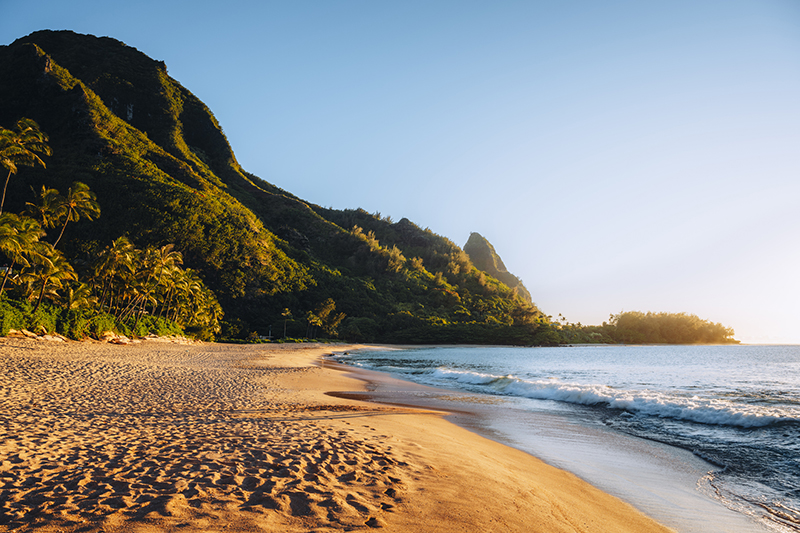
Maui is more than just a tropical getaway—it’s a dream destination for those after a laid-back island lifestyle with lush landscapes, world-class beaches, and stunning ocean views. Its strong sense of community and year-round warm weather only add to its appeal and many are considering making the move to the Valley Isle. But before diving into the Maui real estate market, it’s important to understand the cost of living in Maui and what it takes to own a home here.
Each region comes with its own lifestyle and financial considerations, making it important to choose a community that fits both your budget and your vision of island life.
In this guide, we’ll break down the true cost of living in Maui, Hawaii, helping potential homebuyers and new residents set realistic expectations and plan for a financially sustainable move to paradise.
Table of Content
Costs Breakdown
As you would expect, the biggest challenge for those moving to Maui is the cost of buying a house. As of December 2024, the median listing price for a home in Maui was $1.2 million, with a median sold price of $1.1 million. There are also condos available for those who prefer a more communal and convenient way of living.
Upkeep and repair costs
Beyond the initial purchase price, homeownership in Maui comes with the need to pay upkeep and repair typical of homes in a tropical climate. The combination of humidity, salt air, and occasional tropical storms accelerates wear and tear on homes, making maintenance a significant factor for homeowners.
Here are some key areas of a home homeowners should note:
- Roof maintenance – Sun exposure and salt air cause faster deterioration, requiring repairs or replacement every 15–20 years.
- Pest control – Termites and other tropical pests are common, making regular treatment essential.
- Mold & mildew prevention – High humidity levels increase the risk of mold, leading to costs for dehumidifiers, air conditioning maintenance, and remediation services.
- Septic system or sewer fees – Many homes, especially in rural areas like Haiku or Kula, use septic systems, which require periodic pumping.
- Hurricane and flood preparedness – While Maui isn’t hit by hurricanes often, homeowners should still budget for storm shutters, which can cost a few to several thousand, flood insurance ($700-$1,500 annually), and emergency supplies.
Utilities
Utility costs in Maui are among the highest in the U.S., primarily due to the island’s reliance on imported resources for electricity and water. The average monthly cost for basic utilities—electricity, water, cooling, and garbage services—for an 85m² (900 sq. ft.) apartment is around $390.
Electricity: Since Maui’s power grid depends on imported fuel, residents pay a premium for electricity. Running air conditioning regularly can drive monthly bills even higher, which is why many islanders opt for ceiling fans and natural ventilation instead. To offset costs, some homeowners install solar panels, taking advantage of Hawaii’s renewable energy incentives.
Water: Maui’s water supply is sourced from rainfall and distributed through a complex system. While rates are moderate compared to electricity, conservation is strongly encouraged, especially during dry seasons when water restrictions may be in place.
Internet: High-speed internet (60 Mbps or more, unlimited data) costs around $73.33 per month. Major providers like Spectrum and Hawaiian Telcom offer reliable service in most areas, but rural communities in areas such as Haiku and Kula may have fewer options or slower speeds.
How Maui compares to the mainland
On average, Maui residents pay significantly more for utilities than those on the US mainland. The combination of high electricity rates, premium-priced internet, and the need for cooling makes budgeting for utilities an important part of planning for island life.
Groceries

Living in Maui, Hawaii, means having access to fresh, locally grown produce, world-class seafood, and tropical delights. However, grocery costs in Maui are among the highest in the U.S., averaging 68% more than on the mainland.
Why are groceries so expensive?
One of the biggest factors that drive up grocery prices is shipping costs. Most food items, especially packaged goods, are imported from the mainland, adding significant transportation fees. Although Maui has local farms, the island still relies heavily on imports for staple foods, which contributes to higher prices.
Another reason is tourist demand. High visitor traffic increases the need for popular grocery items, particularly in resort areas, causing prices to spike. Additionally, higher operational costs in Hawaii—such as labor, rent, and utilities—make it more expensive to run grocery stores, and those costs are passed on to consumers.
One of the best ways to cut costs is by shopping at local markets, where fresh produce is often cheaper and of good quality. Many also buy in bulk at places like Costco or Walmart, especially for non-perishable items.
Healthcare in Maui
While living in Maui, Hawaii means higher healthcare costs, residents still have access to quality medical services. The island’s healthcare system continues to evolve, with a growing number of clinics and urgent care centers providing essential medical care.
Maui Memorial Medical Center, located in Wailuku, serves as one of the island’s major hospitals, offering a range of healthcare services. If you’re covered by HMSA health insurance, you’ll have no difficulty accessing health services and treatment at Maui Memorial Hospital. There’s also Kaiser Permanente and Maui Medical Group. A large part of the population is covered by Kaiser, which has been providing healthcare and insurance in Hawaii for over 65 years, and if you have Kaiser coverage, you would most likely use Kaiser Permanente.
In addition to the hospitals, there are several smaller clinics and urgent care centers across the island, ensuring residents have access to routine medical care. For specialized treatments, some patients may need to travel to Oahu, but this also provides access to world-class medical facilities within the state.
Travel

Getting Around
Exploring Maui’s breathtaking landscapes and vibrant communities is easy with the right approach, and getting around the island can be both convenient and manageable. Whether you prefer the freedom of driving, the affordability of public transit, or the ease of ride-sharing, understanding transportation costs can help you make the best choice for your lifestyle.
Car Ownership
Owning a car in Maui gives you the flexibility to go wherever you want, whenever you want—but it’s important to budget for fuel and maintenance. Gas prices here are among the highest in the U.S., reflecting the cost of importing fuel to the island. While this means filling up your tank can be pricey, many residents adjust by carpooling, combining errands, and choosing fuel-efficient vehicles to keep costs down.
Public Transit and Ride-Sharing: Affordable and Flexible Options
For those who prefer simple island living, Maui Bus is a budget-friendly option. With single fares costing just a few dollars and monthly passes available at a discount, it’s a great choice for residents who live near bus routes. While schedules and routes are somewhat limited, the bus system serves many key areas, making it a viable option for those who don’t need to drive every day.
Ride-sharing services like Uber and Lyft offer a convenient alternative, perfect for occasional trips without the commitment of car ownership. While fares can add up—especially for longer rides or during peak tourist seasons—many residents use them strategically, mixing in biking, walking, and public transit.
Renting and Car-Sharing: A Middle Ground
For part-time residents or those who don’t drive daily, rental cars and car-sharing services can be a practical alternative. While rentals can be expensive during peak seasons, planning ahead or opting for long-term rentals can help reduce costs. Some residents even buy used cars instead of renting, finding it a more economical choice over time.
Taxes
Hawaii offers a unique tax structure that affects residents in different ways, from income tax rates to property tax advantages. While the cost of living in Maui can be high, Hawaii’s property taxes are among the lowest in the nation.
Income Tax in Hawaii
Hawaii has a progressive income tax system, with rates ranging from 1.4% to 11%, depending on income level. This is one of the highest top rates in the country, but it primarily impacts high earners. Most middle-income residents fall into the 6% to 8% tax bracket, which is comparable to or lower than many other states with income tax.
One advantage for residents is that Social Security benefits and many pension plans are not taxed at the state level. This makes Hawaii particularly attractive for retirees looking to minimize their tax burden while enjoying island life. However, wages and self-employment income are subject to state taxes, so it’s important for working residents to factor this into their financial planning.
Property Tax: A Silver Lining for Homeowners
While the cost of buying a home in Maui is high, Hawaii has the lowest average property tax rate in the U.S., at around 0.27% of a property’s assessed value. Additionally, homeowners can take advantage of property tax exemptions, such as the Homeowner’s Exemption, which reduces the taxable value of a primary residence. Overall, while income taxes in Hawaii can be on the higher side, the state’s low property taxes help balance the financial equation, particularly for those who own homes in Maui.
Location-Specific Costs
Maui is a diverse island, and the cost of living varies by location. Whether you’re drawn to Haiku’s lush landscapes, Kula’s cool Upcountry charm, or Kihei’s sun-soaked beaches, each area comes with its own unique lifestyle and financial considerations.
Haiku: a laid-back, rural escape
Haiku, located on Maui’s windward side, offers a peaceful, rural setting with lush greenery and plenty of space. Known for its higher rainfall and cooler temperatures, Haiku is ideal for those who appreciate privacy, nature, and a more relaxed pace of life.
Cost of living in Haiku
- Housing: Home prices range from $900,000 to over $3 million, depending on acreage and amenities.
- Utilities: Due to frequent rainfall, many homes rely on catchment water systems, which incur maintenance costs.
- Groceries: Less convenient access to major supermarkets means residents often shop in nearby towns like Kahului, increasing transportation expenses.
- Transportation: Public transit is scarce, so owning a car is necessary. Dirt roads and off-grid properties may require all-wheel drive or 4WD vehicles.
Who it’s best for: Homebuyers looking for large lots, privacy, and a deep connection with nature. Those comfortable with off-grid living and occasional isolation will thrive here.
Kula: Upcountry serenity
Cost of living in Kula
- Housing: Home prices typically range from $1 million to $4 million, with properties offering larger lots and a more suburban feel.
- Utilities: Heating costs can be higher due to cooler temperatures, especially in winter months.
- Groceries: Local markets help offset higher grocery costs, but shopping trips to Kahului or Pukalani are common for bigger purchases.
- Transportation: Most residents own at least one vehicle since public transit is limited. However, gas costs can be lower than in coastal areas due to shorter commutes to central Maui.
Who it’s best for: Those seeking cooler weather, a tight-knit community, and a more suburban-meets-rural lifestyle. Ideal for families and retirees looking for space and tranquility.
Kihei: coastal luxury
Kihei, located on Maui’s sunny south shore, is known for its warm weather, sandy beaches, and lively community. With a mix of affordable condos and multimillion-dollar beachfront homes, Kihei is a hotspot for both full-time residents and vacation home buyers.
Cost of living in Kihei
- Housing: Condos start at around $600,000, while single-family homes range from $1.2 million to over $5 million for oceanfront properties.
- Utilities: High use of air conditioning raises electricity bills, often adding $200–$400 per month to utility costs.
- Groceries: More grocery stores and shopping options keep food prices competitive compared to rural areas.
- Transportation: Public buses are more accessible, but many residents still prefer personal vehicles due to convenience. Gas prices are high but commuting distances are shorter compared to Upcountry or Haiku.
Who it’s best for: Buyers who want easy access to beaches, restaurants, and an active social scene. Ideal for those seeking convenience, warm weather, and a vacation-style lifestyle year-round.
Making Your Maui Dream a Reality
If you’re looking to buy a house in Maui, Hawaii turn to an agent with 35 years of real estate experience in Maui. Dave Futch offers personalized service, deep knowledge of the island’s diverse communities, and expert negotiation skills to help buyers find the perfect home. His mission is to guide clients through the most important financial decisions of their lives, ensuring a fair and successful transaction in Maui’s competitive market.
Ready to make your move to paradise? Contact Dave Futch! Call or text him at 808-280-9600 or send an emails. Start your journey toward homeownership in Maui with a trusted expert by your side.

